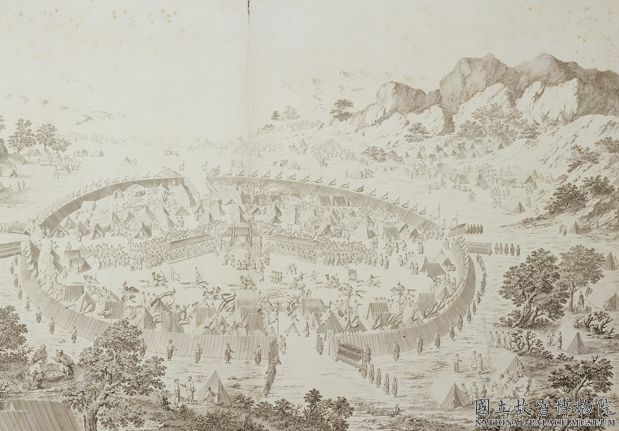[Shen Zhou Western Mountain Rain View]
The Western Mountain Rain View Volume, Ming Dynasty, Shen Zhou painting, paper edition, ink brush, 25.2 cm vertical, 105.8 cm horizontal
The heart of the painting has no signature, and the seal is “Shen” (Zhu Fang), “Shitian” (Zhu Fang), and “Qinan” (Zhu Fang). The official script of “Western Mountain Rain View” in Wen Zhengming’s book is introduced. After that, there are postscripts of Chen Yi, Gu Lin, Wen Zhengming, Tang Zhen, Cai Yu, Xu Chong, Wen Peng, Sheng Shitai and Wen Jiajiu. The seal of the seal is “the treasure of the Emperor Qianlong”, “the treasure of the Emperor Qianlong”, “the appreciation of the Emperor Qianlong”, “the seal of the Sanxi Hall”, “suitable for posterity”, “the use of the descendants”, “the Xiuzhu Hall”, “the treasure collection of Shiqu”, “the treasure collection of Shiqu”, “the treasure collection of the Leshou Hall”, “the treasure collection of the successor of the Ningshou Palace”, “the treasure of the Emperor Jiaqing”, “the fine seal of the Wuyi Hall”, “the appreciation of Xuantong”, “Sheng Zhongjiao” “Shang Qiu Song Luo examined the authentic works”, etc
The picture depicts the change of clouds in the West Mountain of Suzhou, and the scene of smoke disappearing after rain. Shen Zhou imitates the brush technique of Mi Youren, a calligrapher of the Southern Song Dynasty, and depicts the rolling mountains, the clouds and mists in the mountains, the layers of trees, and the villages, lakes, and bridges covered in mist. The rocks and vegetation are all dotted with ink, and they are integrated without lines and scratches, showing the painter’s superb painting level and unique aesthetic charm. The postscript is written by scholars in Suzhou. They often invite each other to get together, drink and compose poems, learn painting skills, and explore knowledge. In the postscript, they express their praise for the “View of Rain on the Western Hills”, which shows that the painting has produced a very important artistic impact and aesthetic resonance among scholars in the middle and late Ming Dynasty
This picture was originally collected in the Qing Dynasty Palace, and the description of Shiqu Treasure Collection – Continuation (3 letters, 28 volumes, 258 pages), which later became popular among the people. The painting heart was intact when the Palace Museum bought it in 1957, but the back self-inscription was incomplete, and the postscript was missing somewhere. In 2002, the Chinese American who collected the postscript learned that the picture scroll was hidden in the Palace Museum, and specially sold the postscript to make it perfect.
![图片[1]-Picture scroll of Shen Zhou’s Western Mountain Rain View-China Archive](https://chinaarchive.net/Ming dynasty/painting/s58def9e987cb7.jpg)

![[Qing Dynasty] British female painter—Elizabeth Keith, using woodblock prints to record China from the late Qing Dynasty to the early Republic of China—1915-China Archive](https://chinaarchive.net/wp-content/uploads/2022/11/image-191x300.png)



